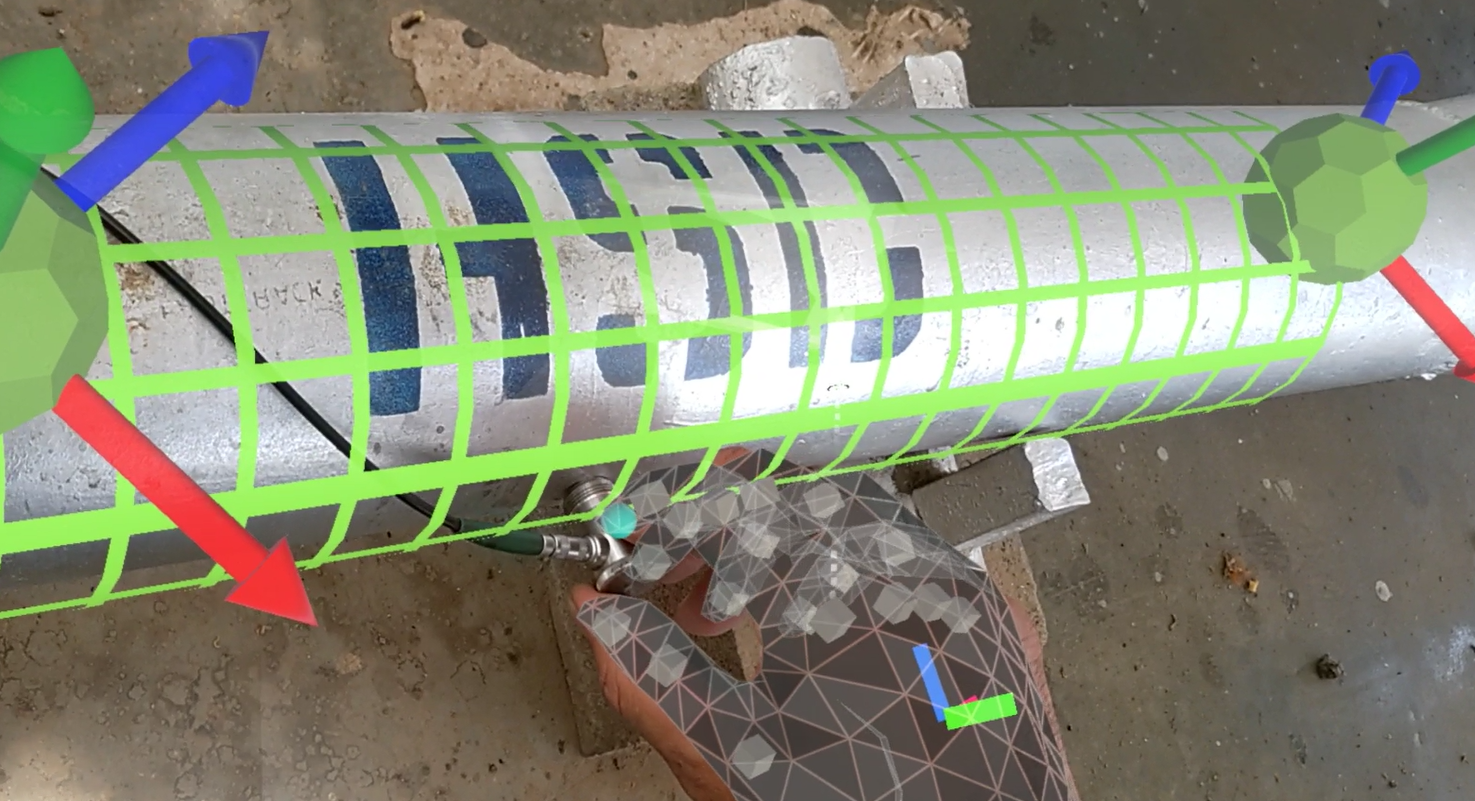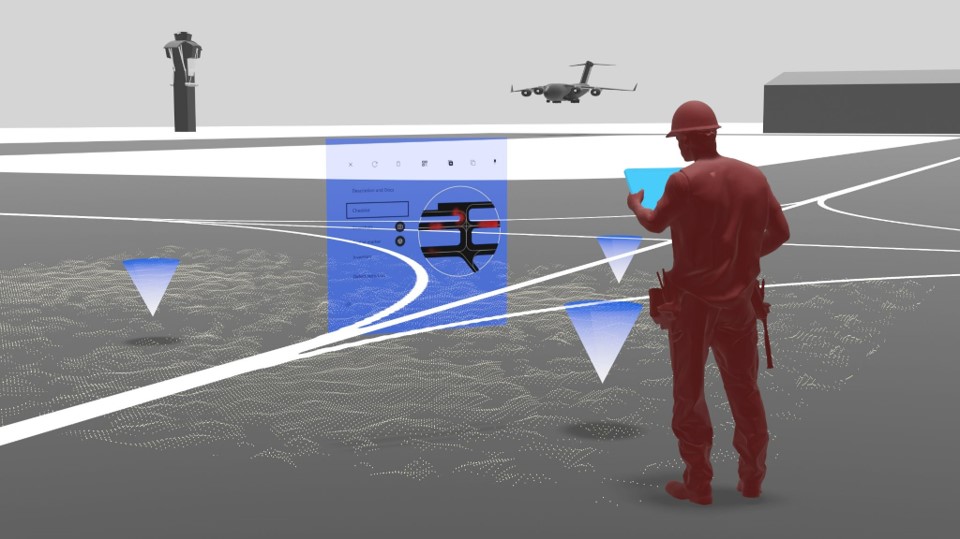What is industrial AR and why should you still care in 2024?
.png)
Generic use cases of industrial AR
In a nutshell, AR superimposes digital image in the user's field of view without fully obstructing it. Below we discuss five broad areas where this concept could be applied in a factory.
1. Work instructions
Most of the manufacturing and repair processes are regulated and described in manuals, process guides, and other Standard Operating Procedures (SOPs). One of the most straightforward uses of AR is to display those work instructions to the technician through the headset. Headset has three advantages compared to the desktop computer or tablet in this context:
- Information could be accessed contextually.
- 3D image is more immersive and easy to understand.
- Experience is hands-free, user doesn't need to carry anything.
Instructions could be programmed to be delivered step-by-step conditional on completion of the previous steps.

2. Quality inspections
Organizations following ISO 9001 are required to maintain records as evidence that products and services meet customer and regulatory requirements. The standard neither prescribes nor prohibits the use of any particular tools for gathering this evidence.
AR devices could be used for collecting the data during a wide range of QA/QC procedures including receiving inspection, in-process, and final inspection. AR improves the process in two ways:
- Instead of filling in the paper form, the inspector takes pictures and notes that are logged straight to the ERP system.
- Quality record is saved with the accurate location reference automatically thanks to the spatial awareness capability of the devices.
3. Training
Demonstration of the complex equipment functionality and critical process steps in an immersive 3d environment increases comprehension and retention. The course could be designed in a way that allows trainees to interact with virtual machines, tools, and parts. The most challenging activities could be animated to eliminate guessing and create strong visual memories.
Virtual Reality generally provides a better visual experience than Augmented Reality and it could be used for training where interaction with the physical environment is not required. AR could be used in turn to connect theory with practical knowledge and serve as a bridge to the Work Instructions use case. Knowledge transfer courses made with both technologies could be used repeatedly by the students allowing them to save time for the instructors.
4. Remote assistance
Video feed from the AR device could be streamed online to the remotely located experts. Those professionals in turn could guide the local team by drawing in their field of view or by sharing additional technical references.
Scenarios where this is useful range from the OEM technicians advising on the repair of the highly specialized equipment to the centralized design team providing engineering disposition to the plant production unit. Alternative to all those cases is on-site travel which is an order of magnitude more expensive and time-consuming exercise.

5. Engineering
With its powerful visualization capabilities, AR could be a great tool for engineering teams.

XR definitions
Virtual Reality (VR) is a fully simulated 3d experience provided to the user via near-eye displays. In VR you don't see anything but a virtual image. Oculus Quest 2 and HTC Vive are examples of VR devices.
Augmented Reality (AR) is a virtual overlay of digital information onto real-world objects via holographic displays. In AR you see both physical space and virtual image.
Mixed Reality (MR) is a virtual overlay of digital information onto real-world objects via holographic displays in a way that virtual objects may interact with physical objects. In MR you see both physical space and virtual image plus virtual objects are responsive to obstacles.
The key difference between AR and MR is that in AR object just hangs in the air in your field of view while in MR you could put it on the table. MR device has active tracking of the environment therefore it knows where the table is. AR device doesn't.
This distinction is important, however many people (including us) use these terms interchangeably because MR devices are also AR devices by definition and most of the advanced headsets and smartphones today do both indeed. In the article about spatial awareness, we should have said MR everywhere instead of AR, however, AR is a better-known term, and we stuck with it.
Microsoft Hololens, Magic Leap, and Apple Vision Pro are examples of AR/MR headsets. Mojo Vision and Xpanceo are examples of AR contact lenses, both are still in the design and prototyping phase.
Assisted Reality (aR) is a provision of digital information without obstructing the user's field of view via the wearable LCD screen. Realwear is an example of an aR device.
Common misconceptions
Remote assistance applications that do not allow interaction with the user's virtual environment should not be called Augmented Reality. Video call via smartphone or tablet is an example of remote assistance but cool your jets, nothing is augmented, it is just a video call!
Remote assistance provided via aR devices should not be called Augmented Reality either. Realwear is a popular headset but respectfully, it is a wearable camera with an LCD screen.
Hololens or Apple Vision Pro should not be called a VR headset. We agreed to acknowledge but ignore the difference between AR and MR but the difference between VR and AR/MR must not be ignored.
Why any of this is important today
The value of AR for the industry resides in specific use cases. To uncover it we should go much deeper than the 5 areas described above yet many industry professionals don't still feel comfortable even on that level.
In 2024 basic terminology, concepts, and scenarios should be familiar to every innovation manager and every investor in the XR space. We shouldn't be coming back to this again but rather should be developing those concrete areas where the new way of handling information made possible by spatial computing could solve tangible problems on the shop floor.
Instead of flooding the market with copycat remote assistance apps and falsely calling them augmented reality, we should care about the true potential of the technology. AR is a vehicle that could open the door and let Artificial Intelligence into the factory. Let's embrace it and take industrial AR to the next level.
.svg)

.svg)





.png)
.png)
.png)
.png)
.png)
